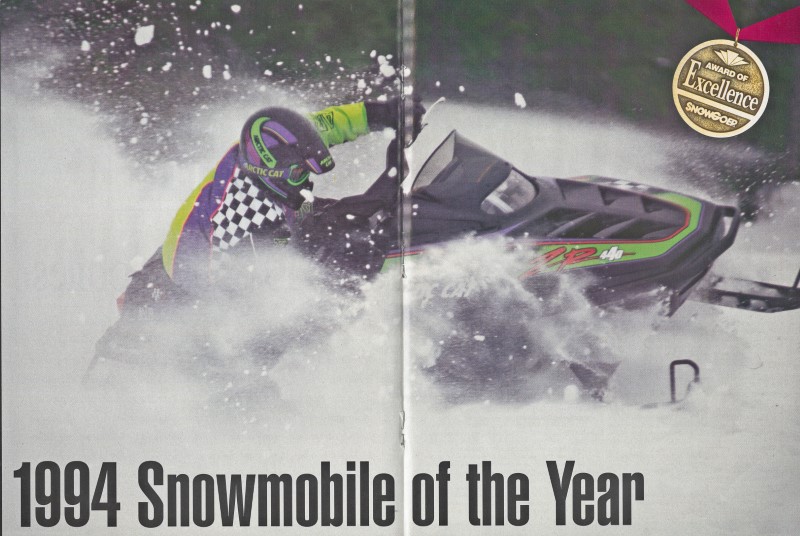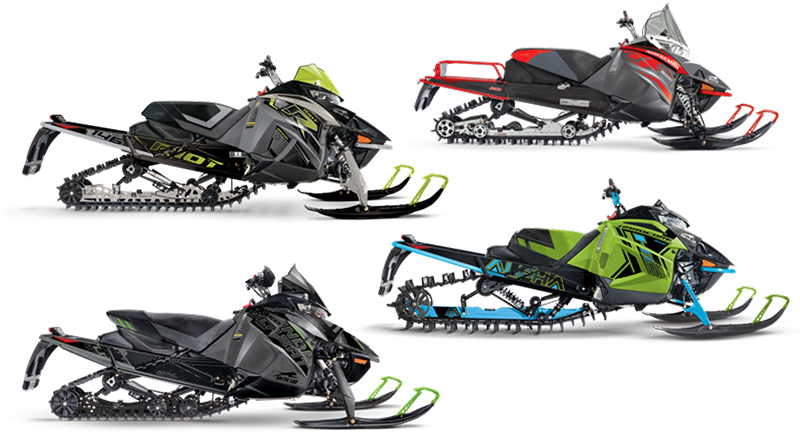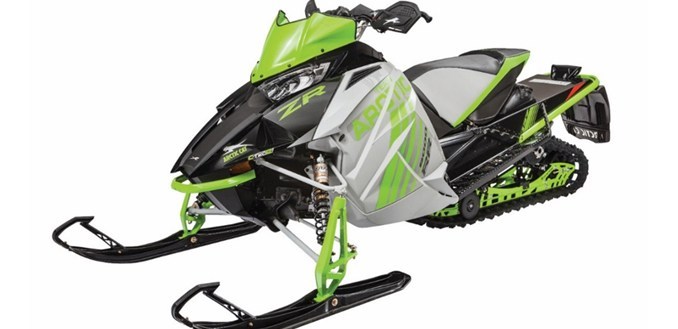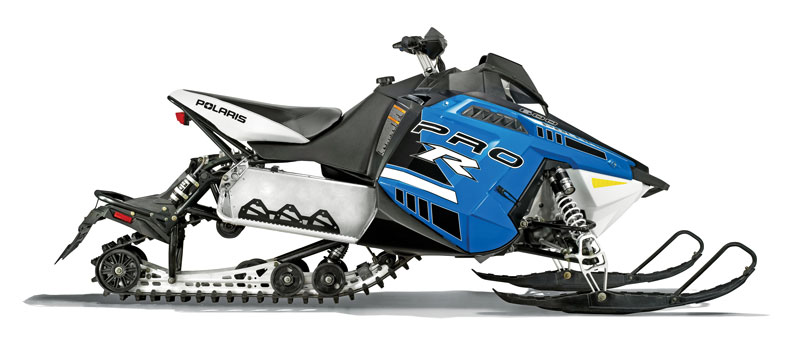Arctic Cat is a company that, at its very core, loves to race, and then apply what it learns from racing to its trail sleds. It has always been that way, and it was most recently proven when the wide A-arm look of the ProCross and ProClimb chassis first debuted on the racetrack and then was brought to consumer models, like many of Cat’s innovations over the years. So it wasn’t a huge surprise to see that Cat was the brand that responded most directly to Ski-Doo’s successful X-RS.
One potential problem, however, was what to name this new machine. The “Sno Pro” badge came directly from racing, but Arctic Cat has softened the edge of trail Sno Pro machines to make them more appealing to common snowmobilers. So, what could be more Sno Pro-esque than a Sno Pro? How about a Sno Pro with a couple of R’s behind it? What race fan after all, wouldn’t want a Racer Replica? Thus the ProCross F 800 Sno Pro RR was born.
To make a base model into an RR, Cat added a tether switch and a 5.5-inch riser on the handlebars; upgraded the brake with the master cylinder, pads and rotor off the race sled; reinforced the tunnel and added a wider tunnel edge with significant foot traction; and gave the sled a ceramic-coated muffler. Our test model also had the love-it-or-hate-it busy and loud racing paint job and graphics — with the left side green and the right side white. This sled gets noticed.
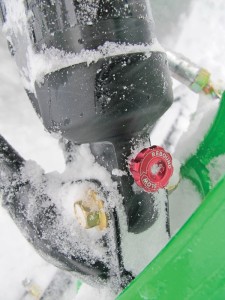
Most notable, however, are changes in the rear suspension, where RR features the Race Slide Action skidframe, a modified version of the FasTrack found in regular trail sleds. It has a longer, flatter front arm to help control transfer over extreme terrain, a seven-position coupling system (the FasTrack has four positions) and a beefier construction overall, including braces on the rails and strengthened front arm and idler arm.
Fox Evol Zero X piggyback shocks hold up the rear suspension, while the Arctic Race Suspension up front utilizes Fox Evol X air shocks with two air chambers — one for ride height and the second for bottoming resistance. The front and rear shocks have externally adjustable compression and rebound adjustments, while the center/front arm shock only has compression adjustments.
The race version of the ProCross chassis has proven itself on the racetrack and on cross-country courses, and our test riders really enjoy the chassis on the trail or off-trail busting moguls. Cat says the suspension calibrations on the RR are the same as its top racers’ cross-country setups, which are dialed in for 24-inch-plus moguls and G-rollers.
While official weights aren’t available from Cat, the RR feels heavier and more planted than the MX Z. Some riders may prefer this planted feel over the aforementioned lighter, occasionally twitchy feeling of the Doo, but in the sort of big moguls that this buyer is likely to attack, the RR was definitely more of a workout, sending more energy to the rider. The Cat was less forgiving if the face of a bump was not hit squarely — on the lighter feeling Ski-Doo, the rider was able to flow with the machine better and make corrections in the air almost intuitively. The Cat had to be wrestled more.
The skidframe was a little softer than on the X-RS, and we were able to find the bottom of the suspension over some gnarly terrain. We enjoyed the more beefy construction and were able to make some gains with the clicker adjustments, but it didn’t get close to the rMotion in terms of ride quality. Then again, nothing else has either.
Cat has always had a well performing front suspension in the bumps and the company made it even better in the ProCross chassis by nearly eliminating most inside ski lift on the Arctic Race Suspension dual A-arm front. The RR is set up stiffer than other Cat models, so we did notice a some inside ski lift, but it could be compensated for with rider input. Some riders commented on a little ski push in the corners, but nothing that had anyone too bent out of shape. This sled responds to rider input and loves to be pushed by a driver who crawls all over the tank and seat. The ProCross chassis usually tracks pretty straight, however this model wants to jump side to side on corners with stutters. In a straight line, the sled tracks straight over stutters or deep moguls.
The ergos of the machine were typical of a two-stroke Arctic Cat — roomy, with a somewhat slippery seat, wide bars and no wind protection, not even hand guards.
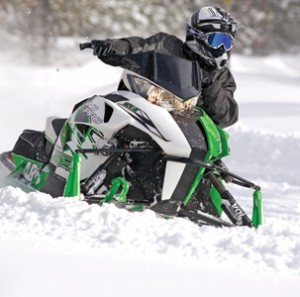
The 794cc twin may produce strong horsepower specs and can provide a joyous ride, but fuel delivery is the weak link. The sled smokes, gurgles and smells. The engine feels powerful, but its powerband seemed narrow and our test model lacked the top-end punch of the X-RS. This could have been a result of a missed calibration on our test mule at altitude, however; past experience tells us Cat’s and Ski-Doo’s 800s have a similar powerband all the way to the top.
Overall, the ProCross F 800 Sno Pro RR mirrors the X-RS in that it is a fun snowmobile on which riders might feel the desire to hold the flipper all the way to the bars whenever they approach a nasty section of ruts or a field approach along a ditchline. It’ll put smiles on a lot of Cat customers’ faces, who have had to either select an underpowered Sno Pro 500 or a heavy Twin Spar sled in recent years for super-aggressive riding. It’s not on par with the X-RS yet, but it’s a major step in the right direction.
See why the X-RS took top honors in this comparison.
Arctic Cat ProCross F 800 Sno Pro RR – $13,599
Claimed dry weight: N/A Engine: 794cc liquid-cooled twin, throttle body EFI, bore/stroke 85x70mm Track: 15x129x1.25 RipSaw

